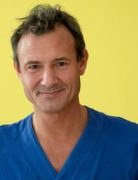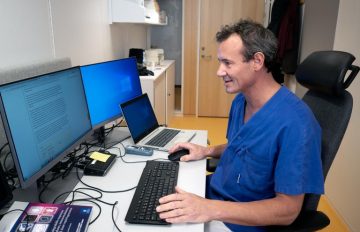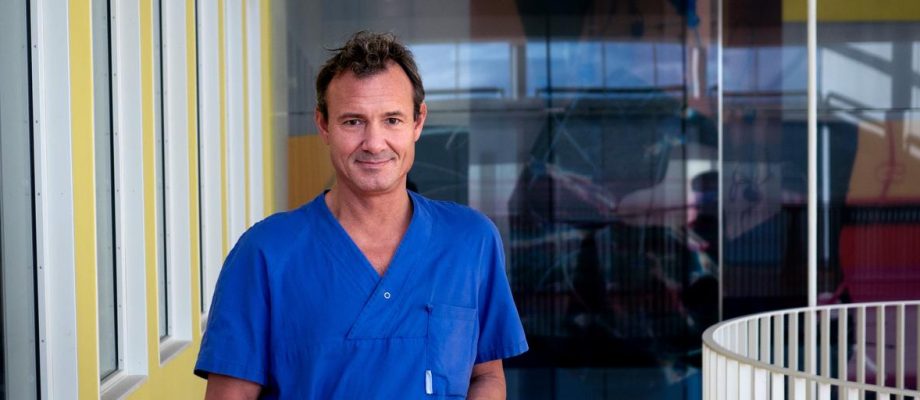RESEARCHER PORTRAIT. Ola Rolfson, professor of orthopaedics and head of the department, sheds light on the unique opportunities for orthopaedic research in Gothenburg. Additionally, he addresses a persistent challenge in joint replacement surgery that he is actively seeking to resolve.
Twenty years ago, Ola Rolfson served as a resident physician in orthopaedics at Kungälv Hospital, where he had a mentor named Lennart Gustafsson.
“Lennart had an incredible ability to inspire people. Early in my career, he told me, ‘Ola, with your talent, you shouldn’t waste your life here at a rural clinic. Engage in research!’ Through Lennart’s connections at Sahlgrenska, I got involved in registry research on hip replacements. I found it intriguing and embarked on a doctoral project,” says Ola Rolfson.
New horizons in clinical work
Engaging in doctoral studies and research significantly influenced Rolfson’s professional growth.
“Quite early in the doctoral project, new horizons opened up for me. From a perspective limited to Kungälv Hospital, where orthopaedics seemed one-dimensional to me, I discovered and learned invaluable aspects applicable to my clinical work,” reflects Rolfson.
Rolfson emphasizes the importance of a critical approach to research for enhanced patient care.
“Incorporating research allowed me to approach reports differently. I could inspect studies with fresh eyes, making informed judgments. This ability became integral to my clinical decision-making.”
![]() What makes the University of Gothenburg an attractive environment for researchers in orthopaedics?
What makes the University of Gothenburg an attractive environment for researchers in orthopaedics?

Photo: Jakob Lundberg
“We have a wide range, both clinically and in terms of research. The collaboration between academia and clinical operations is seamlessly integrated. There are excellent conditions for conducting clinical research, with a management team prioritizing research and development,” says Ola Rolfson, continuing:
“Orthopaedics has its own research unit with a team of over 20 employees supporting research projects. We have numerous research labs and facilities gathered in one place. We are likely the largest producer of orthopaedic research in the Nordic region.”
World leaders in registry research
The research area of orthopaedics currently has close to 70 doctoral students.
“Additionally, we are world leaders in registry research. Both the joint replacement registry, for which I am responsible, and the fracture registry are based in Gothenburg. With the help of these national quality registers, we have been able to conduct unique research and establish many national and international research collaborations.”
Ola Rolfson’s research focuses on joint replacements. Over the years, research in this area has contributed to major improvements and new ways of working.
“We now employ different implants and innovative plastics, reducing complications. Evolving patient care post-surgery has been revolutionary, allowing same-day or next-day discharge. Our tailored approach minimizes medications and disrupts traditional physiological practices.”
A remaining challenge
Despite these advances, infections post-joint replacement surgery remain a challenge.
“Infections are the only area where we haven’t been able to make things better. In Sweden there was a large project aiming to stop protest-related infections, but it did not reduce the infection rate. Approximately 1.5% of joint replacements still face infections, necessitating prolonged hospital stays and potential prosthesis replacements,” says Ola Rolfson.
![]() What would you like to achieve with your research that can help these patients?
What would you like to achieve with your research that can help these patients?

Photo: Jakob Lundberg
“Our research aims to improve diagnostics and treatment in cases where infections occur. We need to gain a deeper understanding of which antibiotics to administer and how to optimize conditions for healing infections.”
BY: JAKOB LUNDBERG
The article was first published by the Institute of Clinical Sciences












Leave a Comment